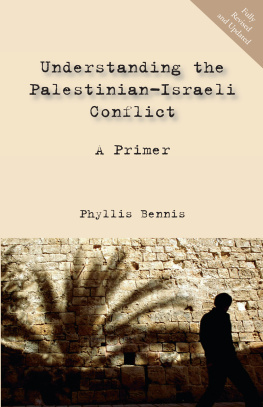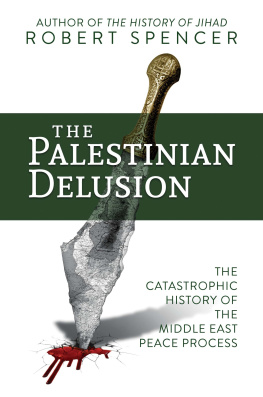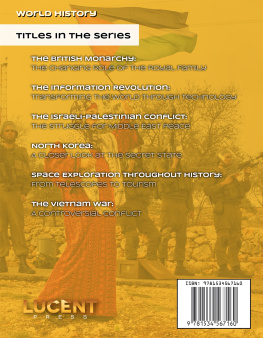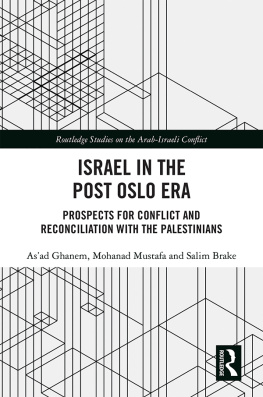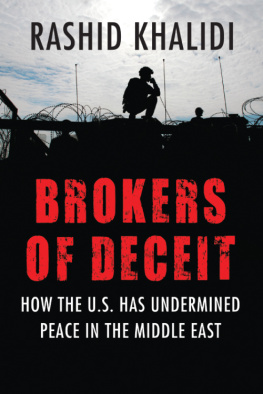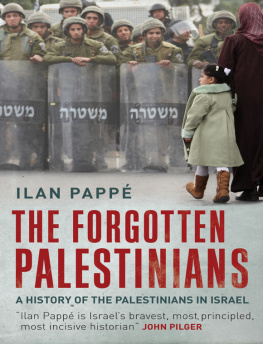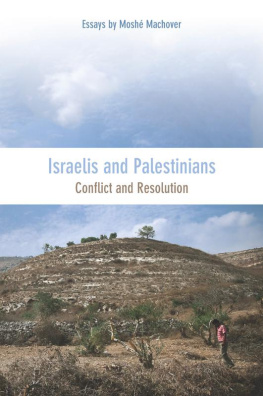Praise for
Understanding the PalestinianIsraeli Conflict: A Primer
This balanced and highly useful primer presents in question-and-answer form extensive explanations of recent events in the Israeli-Palestinian struggle. It explains both sides needs and actions, the recent surge in violence, and the roles of the United States, the United Nations, the Arab States, and Europe An essential volume by an experienced scholar and analyst at the Institute for Policy Studies in Washington, DC. Library Journal
In her compact, concise, and highly useful guide, Bennis...explains various aspects of the longstanding conflict between the Palestinians and Israel....This is an excellent addition to any Middle East collection. Multicultural Review
Phyllis Bennis has produced a simple and educational work about a highly complicated conflict. Understanding the Palestinian-Israeli Conflict: A Primer isas its title suggeststargeted to newcomers to the issue. It is written in direct question-and-answer format, with questions (and answers) distributed among six parts. The answers that Bennis provides to her self-posed questions get important aspects of the history of Palestinian right. She also addresses the current role of the West the author is deeply knowledgeable of the conflict and its history. The author details the Palestinian position [A]voids taking advantage of a class analysis approach [T]his is a competent, direct, and accessible introduction to the issue. Journal of Palestine Studies
Bennis (Institute for Policy Studies) utilizes a question and answer format in order to provide a well-informed and, considering its brevity, surprisingly detailed primer on Israeli-Palestinian history and politics for an American audience seeking to understand US policy in the region. Bennis assumes almost no prior knowledge of the region and even answers such introductory questions as Why are the Palestinians in Israel at all? She also provides significant detail on UN resolutions concerning the conflict, the role of other states and the United Nations in the conflict, the diplomatic intricacies of the socalled peace process, Israeli violations of international law, and the impact of important events such as the occupation of Iraq and the Israeli war in Southern Lebanon. All but the most expert will likely learn something and the neophyte will greatly benefit in understanding by reading this book. Book News
for Geoff Hartman
Understanding the
PalestinianIsraeli Conflict
A Primer
Phyllis Bennis
An imprint of Interlink Group, Inc.
www.interlinkbooks.com
This edition first published in 2012 by
OLIVE BRANCH PRESS
An imprint of Interlink Publishing Group, Inc.
46 Crosby Street, Northampton, Massachusetts 01060
www.interlinkbooks.com
Text copyright Phyllis Bennis 2007, 2009, 2012
All maps courtesy of PASSIA unless otherwise noted in the text
Published in association with TARI (Trans-Arab Research Institute, Inc.) TARI provides scholarly studies oriented towards understanding the present social, cultural, economic and political issues confronting Middle Eastern societies. It provides a venue for interactive meetings between Middle Eastern and international participants and provides focused research and public venues to analyze, discuss and present alternative perspectives.
All rights reserved. No part of this publication may be reproduced, stored in a retrieval system, or transmitted in any form or by any means, electronic, mechanical, photocopying, recording or otherwise without the prior permission of the publisher.
Library of Congress Cataloging-in-Publication Data
Bennis, Phyllis, 1951
Understanding the Palestinian-Israeli conflict : a primer /
by Phyllis Bennis. 1st ed.
p. cm.
ISBN 978-1-56656-685-8
1. Arab-Israeli conflict. 2. United StatesForeign relationsMiddle
East. 3. Middle EastForeign relationsUnited States.
I. Title.
DS119.7.B38386 2007
956.94054dc22
2006100376
Cover image by George Azar
Printed and bound in the United States of America
10 9 8 7 6 5
To request our complete 48-page full-color catalog, please call us toll free at 1-800-238-LINK, visit our website at www.interlinkbooks.com or write Interlink Publishing, 46 Crosby Street, Northampton, MA 01060
e-mail: info@interlinkbooks.com
contents
part viupdate to the new edition:
recent developments
maps
part i
the crisis
Why is there so much violence in the Middle East? Isnt there violence on both sides?
The violence in Israel and the occupied Palestinian territories has come from both sides. Its human tragedies are equally devastating for all victims and all their families. Innocents, including children, have been killed on and by both sides, and both sides have violated international law. But the violence by Israelis and by Palestinians is not an equal opportunity killer; it does not have the same roots, nor are the two sides culpable in the same way.
Palestinians in the territories live under Israeli military occupation. They are not citizens of Israel or of any state, and have no rights of protest or redress. The occupation is a violent daily reality, in which Israeli soldiers, checkpoints, tanks, helicopter gunships, and F-16 fighter jets control every aspect of Palestinian lives, and have recently brought social, family, and economic life to a virtual halt. In summer 2002, the US Agency for International Development determined that Palestinian children living in the occupied territories faced malnutrition at one of the highest levels in the worldhigher than in Somalia and Bangladesh. By the summer of 2006, UN humanitarian agencies warned that poverty in Gaza was close to 80 percent, and unemployment over 40 percent. The occupation has been in place since 1967, although the current period has seen perhaps the most intense Israeli stranglehold on Palestinian life, and the highest levels of violence. What we often hear described simply as the violence in the Middle East cannot be understood without an understanding of what military occupation means.
Violence is central to maintaining Israels military occupation. It is carried out primarily by Israeli military forces and Israeli settlers in the occupied territories who are themselves armed by the Israeli military, and its victims include some Palestinian militants and a large majority of Palestinian civilians, including many children. Because military occupation is itself illegal, all Israeli violence in the occupied territories stands in violation of international lawspecifically the Geneva Conventions that identify the obligations of an occupying power to protect the occupied population.
Palestinian violence is the violence of resistance, and has escalated as conditions of life and loss of hope breed greater desperation. It is carried out primarily by individual Palestinians and those linked to small armed factions, and is aimed mostly at military checkpoints, soldiers, and settlers in the occupied territories; recently more attacks, particularly suicide bombings, have been launched inside Israel, many of which have targeted civilian gathering places. Those attacks, targeting civilians, are themselves a violation of international law. But the overall right of an occupied population to resist a foreign military occupation, including through use of arms against military targets, is recognized as lawful under international law.
Why should we care about violence in the Middle East?

